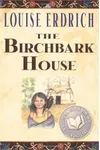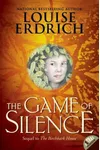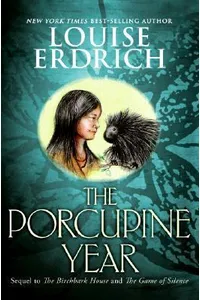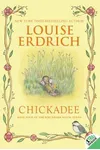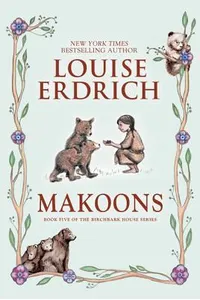Step into the vibrant world of the Birchbark House series, where the heartbeat of Ojibwe culture pulses through the adventures of a young girl named Omakayas! Written by acclaimed author Louise Erdrich, this beloved series of indigenous historical fiction transports readers to the mid-19th century, offering a heartfelt glimpse into the daily life, traditions, and resilience of an Ojibwe family. With lyrical prose and meticulous research, Erdrich crafts a narrative that’s as educational as it is enchanting, making it a must-read for fans of historical fiction and cultural storytelling.
Unlike typical pioneer tales, Birchbark House flips the script, sharing history through the eyes of Native Americans facing the encroachment of white settlers. It’s a refreshing counterpoint to classics like Little House on the Prairie, blending humor, heartache, and hope in a way that captivates readers of all ages.
How Birchbark House Began
Louise Erdrich, a member of the Turtle Mountain Band of Chippewa, drew inspiration from her own family’s history and Ojibwe heritage to create the Birchbark House series. Frustrated by the negative portrayals of Native Americans in popular media, Erdrich set out to tell an authentic story of her ancestors’ lives. She wove together oral histories, trappers’ journals, and personal experiences—like her pet crow and visits to Madeline Island—to craft a vivid, grounded narrative. First published in 1999, the series began as a story for her daughters, evolving into a critically acclaimed saga that challenges stereotypes and celebrates Native humanity.
The Heart of Birchbark House
The series kicks off with The Birchbark House, set in 1847 on Madeline Island in Lake Superior. We meet seven-year-old Omakayas, nicknamed Little Frog for her hopping first step, as she navigates family life, smallpox outbreaks, and her emerging gift as a healer. The sequel, The Game of Silence (2005), follows Omakayas at nine, grappling with the threat of forced relocation as white settlers encroach. The Porcupine Year (2008) tracks her family’s perilous journey to find a new home, while Chickadee (2012) and Makoons (2016) shift focus to Omakayas’s twin sons, exploring new challenges on the Great Plains.
Erdrich’s storytelling shines through themes of family, community, and resilience. The series captures the cyclical rhythm of Ojibwe life—building birchbark houses in summer, harvesting rice in fall, and sharing stories in winter—while weaving in spiritual elements like Omakayas’s prophetic dreams. Her lyrical prose, sprinkled with Ojibwe words and enhanced by her own pencil drawings, creates an immersive world. The books balance joy and sorrow, from powwow dances to the pain of loss, offering a nuanced portrait of a matriarchal society facing historical upheaval.
Why Birchbark House Resonates
The Birchbark House series has left a lasting mark on children’s literature, earning accolades like a National Book Award nomination and two Internally, two Scott O’Dell Awards. By centering Ojibwe perspectives, it fills a critical gap in historical fiction, countering Eurocentric narratives with authenticity and depth. Readers, especially young ones, connect with Omakayas’s universal experiences—sibling rivalries, love for pets, and personal growth—while learning about Ojibwe culture and history. Its impact extends to classrooms, where educators use it to teach about Native American resilience and cultural richness, fostering empathy and understanding.
- About Birchbark House
- Publication Years: 1999–2016
- Number of Books: 5 (The Birchbark House, The Game of Silence, The Porcupine Year, Chickadee, Makoons)
- Awards: National Book Award Finalist, Scott O’Dell Award winner
- Setting: Mid-19th century, Lake Superior and Great Plains
Grab The Birchbark House and dive into a world of Ojibwe history and heartwarming storytelling! Whether you’re a history buff or just love a good story, this series will leave you inspired and eager for more.
